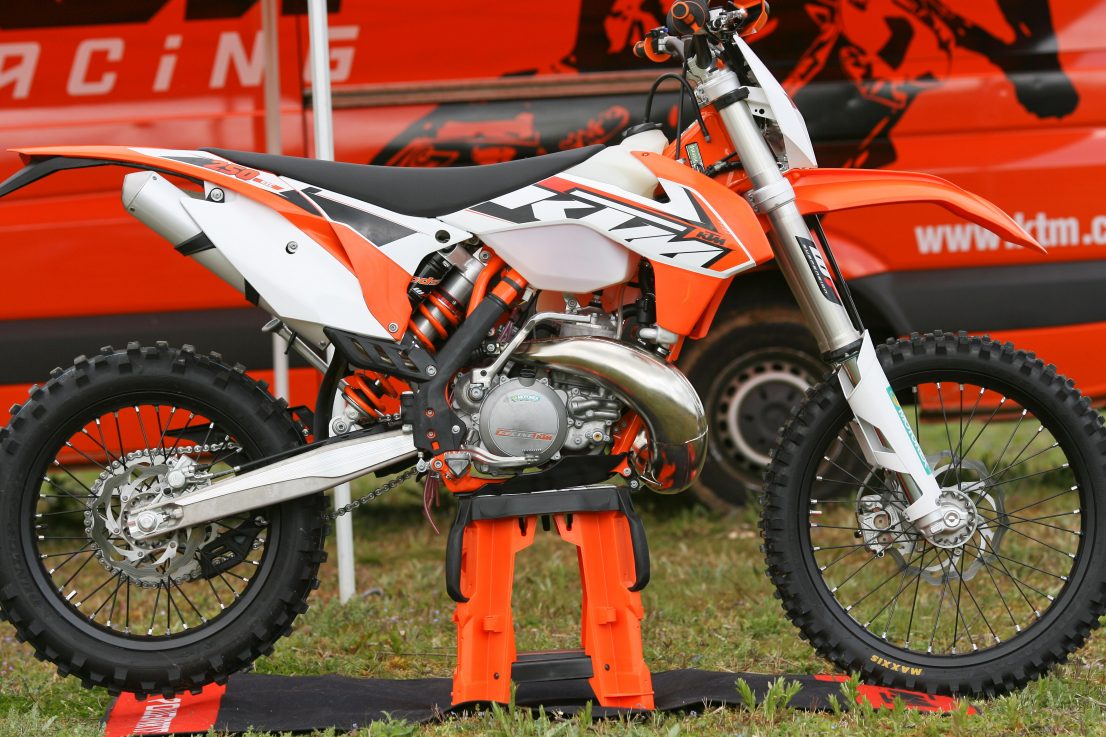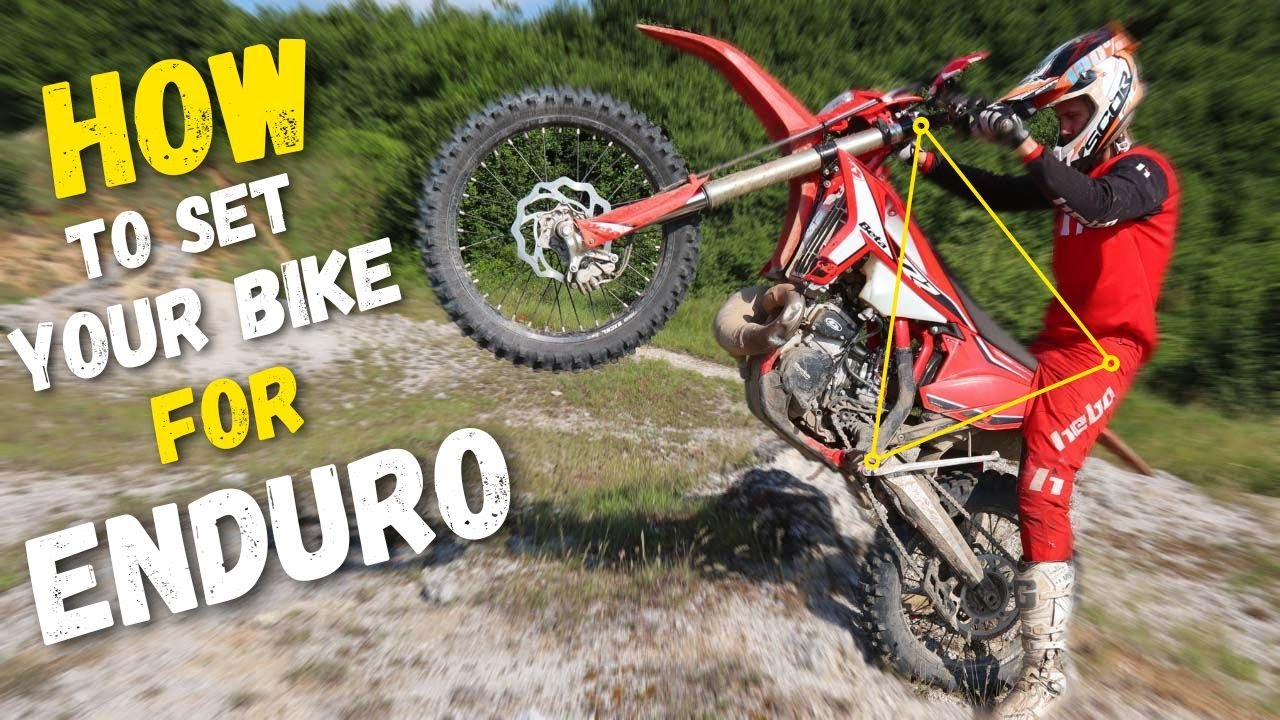To setup dirt bike suspension for enduro, adjust the sag, compression, rebound, and clickers according to the rider’s weight and trail conditions. Properly setting up the suspension on your dirt bike for enduro riding is crucial for optimal performance on challenging terrains.
Whether you’re tackling rocky trails or navigating through muddy tracks, your bike’s suspension settings can greatly affect your comfort, control, and overall riding experience. We will guide you on how to set up your dirt bike suspension for enduro riding.
We will cover essential adjustments such as sag, compression, rebound, and clickers, providing you with the necessary knowledge to fine-tune your suspension based on your weight and trail conditions. So, let’s dive in and optimize your dirt bike’s suspension for a smoother and more enjoyable enduro adventure.

Credit: rustsports.com
The Importance Of Proper Suspension Setup For Enduro Riding
The proper setup of dirt bike suspension is crucial for enduro riding, as it plays a significant role in enhancing control and stability on rugged terrains. By adjusting the suspension settings to match your riding style and the specific conditions you’ll encounter, you can optimize your bike’s performance and improve your overall riding experience.
One of the key benefits of a well-tuned suspension is increased rider comfort, which helps to minimize fatigue during long rides. By absorbing the impacts and vibrations from uneven surfaces, the suspension system reduces the strain on your body, allowing you to maintain better control and focus on the trail ahead.
To achieve the best suspension setup, it’s essential to consider factors such as sag, compression and rebound damping, preload, and spring rate. Fine-tuning these settings will ensure that your bike responds predictably and handles the challenges of enduro riding with ease.
| Suspension Adjustments | Benefits |
|---|---|
| Setting proper sag | Provides optimal balance and control |
| Adjusting compression damping | Improves stability on rough terrain |
| Tweaking rebound damping | Enhances traction and prevents excessive bouncing |
| Optimizing preload | Ensures proper weight distribution |
| Choosing the right spring rate | Improves handling and prevents bottoming out |
By understanding the importance of proper suspension setup and making the necessary adjustments, you can enjoy a smoother, more controlled, and fatigue-free ride, allowing you to conquer the challenges of enduro riding with confidence.
Factors To Consider Before Adjusting Dirt Bike Suspension
When adjusting your dirt bike suspension for enduro riding, there are several factors to consider. First and foremost, understanding your riding style and the terrain conditions you often encounter is crucial. This will help you determine the appropriate suspension settings to enhance your performance and comfort.
Evaluating your weight, height, and skill level is also important. The suspension needs to be able to support your weight and provide the necessary stability and control. Adjustments may be needed if you’re on the heavier or lighter side, or if you’re a beginner versus an experienced rider.
Examining your current suspension components and settings is equally essential. This includes checking the fork and shock absorber condition, as well as the rebound and compression settings. Any damaged or worn-out parts should be replaced, and adjustments should be made based on your preferences and requirements.
Step-By-Step Guide For Setup Dirt Bike Suspension For Enduro
When setting up your dirt bike suspension for enduro riding, it is crucial to find the ideal sag measurement for both the front and rear suspension. The sag measurement refers to the amount of suspension travel used when the rider sits on the bike. To determine the sag measurement, follow these steps:
| Step | Instructions |
|---|---|
| 1 | Measure the distance between specific points on the suspension. |
| 2 | Adjust the preload on the fork and shock to achieve the desired sag measurement. |
Next, you’ll need to adjust the fork compression and rebound damping settings. Compression damping controls the suspension’s resistance to being compressed, while rebound damping controls its return after compression. Fine-tune these settings to match your riding style and track conditions.
Similarly, you should optimize the clicker settings for different track conditions. The clicker settings adjust the damping characteristics to provide better performance on different terrain. Experiment with different clicker positions to find the optimal settings for your riding conditions.
Setting up your dirt bike suspension for enduro can greatly improve your riding experience. By following this step-by-step guide and fine-tuning the sag measurement, compression and rebound damping settings, and clicker positions, you’ll be able to achieve the best performance and control on the trails.
Troubleshooting Common Suspension Issues In Enduro Riding
Identifying signs of incorrect suspension setup can greatly improve your enduro riding experience. Excessive bottoming out and harshness are two common problems that riders often encounter. If you notice your bike bottoming out frequently, it could be an indication of incorrect spring or damping settings. Harshness, on the other hand, can be caused by excessive compression or rebound damping. To address these issues, start by adjusting the sag and ensuring that the spring rate matches your weight.
If the bottoming out continues, consider adjusting the compression and rebound damping settings. Another common issue is excessive suspension dive or wallowing, which can compromise your bike’s stability. You can troubleshoot this by adjusting the compression damping and ensuring proper suspension linkage setup. By addressing these common suspension issues, you can optimize your dirt bike setup for enduro riding and enhance your overall performance on the trails.
Understanding The Role Of Suspension Tuning Accessories
Understanding the role of suspension tuning accessories is crucial for setting up your dirt bike suspension for enduro. Exploring aftermarket parts and components allows for customization and optimization of your suspension system. By utilizing linkages and lowering kits, you can improve ride height and geometry, enhancing your bike’s performance on different terrains. These modifications can greatly impact your overall riding experience.
Additionally, selecting the right fork and shock springs can further enhance suspension performance. Different springs provide varying levels of stiffness, allowing for better control and handling. By matching the springs to your riding style and weight, you can achieve optimal suspension responsiveness and comfort.
Investing time and effort into customizing your dirt bike suspension with these aftermarket accessories can significantly improve your enduro riding experience. It is important to experiment and find the right combination that suits your preferences and riding conditions.
Regular Maintenance And Suspension Tuning For Enduro Bikes
Regular maintenance and suspension tuning are crucial for optimal performance of enduro bikes. Cleaning and inspecting suspension components is the first step to ensure they are free from wear and damage. This involves carefully examining the forks and shock for any signs of leaks, cracks, or excessive wear. Lubrication and servicing of fork and shock seals should be done regularly to prevent any potential issues and maintain smooth operation.
Periodic checks and adjustments are also necessary to maintain the suspension’s optimal performance. This includes evaluating the sag, rebound, and compression settings to match the rider’s preferences and the terrain. Fine-tuning these settings allows for better control, improved handling, and overall comfort during rides. Additionally, keeping an eye on the suspension’s bushings, linkage bearings, and pivot points is essential to ensure smooth movement and prevent any unnecessary friction.
Tips For Testing And Fine-Tuning Suspension Setup
Conducting test rides on different terrains and varying conditions will help you understand the changes and effects of different suspension settings. It is crucial to keep a record of adjustments and their impact on bike performance.
Test rides on various terrains, such as rocky trails, sandy dunes, and muddy tracks, will allow you to assess how your suspension performs in different scenarios. Pay attention to how the bike handles bumps, jumps, and corners, as well as its stability and responsiveness. Observe any issues like bottoming out, excessive bouncing, or instability.
Experiment with different settings, including compression, rebound, and sag, while recording the adjustments you make. Note how each change affects the bike’s handling, comfort, and stability. This record will be valuable in helping you fine-tune your suspension setup to suit your riding style and preferences.
Remember, proper suspension setup is crucial for a smooth and controlled ride, enhancing both your confidence and overall performance.
Frequently Asked Questions On How To Setup Dirt Bike Suspension For Enduro
What Does Too Much Rebound Feel Like?
Too much rebound feels bouncy and unstable, with the suspension bouncing back excessively after being compressed.
How Do You Set Up Ktm Suspension?
To set up KTM suspension, follow these steps: 1. Adjust the preload, compression, and rebound settings based on your weight and riding style. 2. Use the owner’s manual as a reference for the recommended settings. 3. Test the suspension on different terrains and make small changes to find the optimal setup.
4. Consult with a professional suspension tuner for expert advice if needed.
How Do You Stiffen A Dirt Bike Suspension?
To stiffen a dirt bike suspension, adjust the compression and rebound settings on the fork and shock absorber. Consult your bike’s manual or seek professional help for the best results.
What Makes A Dirt Bike An Enduro?
A dirt bike is called an enduro due to its specific design and features for off-road racing.
Conclusion
Setting up your dirt bike suspension is crucial for a smooth and successful enduro ride. By understanding the different components and making the necessary adjustments, you can optimize your bike’s performance and enhance your riding experience. Start by adjusting the sag to achieve the proper balance and weight distribution.
Then, fine-tune the compression and rebound settings to suit your riding style and terrain. Don’t forget to regularly check and maintain your suspension, as it can wear out over time. Experiment with different settings and seek professional advice if needed.
Remember, having a well-tuned suspension can make all the difference in your enduro adventures, providing better control, improved handling, and increased confidence on the trails. So take the time to set up your dirt bike suspension properly and get ready to tackle any challenge that comes your way.
Happy riding!

